Die Aufnahmen sind während dieser Reise entstanden. Alle Familienmitglieder waren anwesend, sind auf den Bildern jedoch oftmals abwesend. Einzig ab und zu, oftmals unerwartet, taucht ein Gesicht auf, macht sich eine Stimme hinter der Kamera bemerkbar. Es dominieren Aufnahmen von Landschaften, Strassenschluchten, Tieren.
Juli 1996. Mit 44 Jahren stirbt der Vater an einem Herzinfarkt. Die Künstlerin ist 14 Jahre alt. Seither gibt es ein „Vorher“ und ein „Nachher“, einen Bruch in der Zeitachse.
Genau 30 Jahre nach der Reise schaut sich die Künstlerin das Videomaterial zum ersten Mal an. Es braucht viel Überwindung. Denn während dieser Verlust und die Lücke in ihrem Leben sehr präsent und konkret sind, bleiben viele Momente mit ihrem Vater einzig als Erinnerungsfragmente bestehen, verweben sich ineinander, und sind schwer in eine Zeitachse einzufügen. Dem Regelbuch der Zeit fehlen Seiten.
Im Altgriechischen gibt es zwei Definitionen von Zeit. „Chronos“ ist die lineare Zeit: Ein Jahr hat 365 Tage, eine Stunde 60 Minuten. Das ist für alle gleich. „Kairos“ hingegen ist die erlebte Zeit, die individuell ist.
Das erklärt auch, warum sich ein Ereignis so nah und lebendig anfühlen kann, obwohl es Jahrzehnte her ist. Mit diesem Phänomen setzt sich die Künstlerin in „Kairos“ auseinander und ergründet unsere Beziehung zwischen der messbaren, numerischen Zeit und der subjektiven, gefühlten Zeit.
Eine Sekunde Bewegtbild besteht aus 25 Standbildern, sogenannten Frames. Sie sind statisch. Unser Gehirn spinnt daraus jedoch eine dynamische Abfolge. Die Bewegung existiert also nur in unserer Wahrnehmung. Die Welt steht still und dreht sich gleichzeitig weiter, in der Trauer, wie im Leben.
Die Videoinstallation ist eine Einladung, sich mit der Fragilität unserer Wahrnehmung auseinanderzusetzen.
Ces images ont été tournées au cours de ce voyage. Tous les membres de la famille étaient présents, mais ils sont souvent absents des images. De temps en temps, souvent de manière inattendue, un visage apparaît, une voix se fait entendre derrière la caméra. Les images de paysages, de canyons urbains et d'animaux dominent.
Juillet 1996. Le père décède d'une crise cardiaque à l'âge de 44 ans. L’artiste a 14 ans. Depuis, il y a un « avant » et un « après », une rupture dans la chronologie.
Trente ans après ce voyage, l'artiste regarde pour la première fois les vidéos qui ont été réalisées à cette occasion. Cela demande beaucoup de courage, car si cette perte et ce vide dans sa vie sont très présents et concrets, de nombreux moments avec son père ne subsistent que sousforme de fragments de souvenirs. Ceux-ci s'entremêlent et sont difficiles à insérer et à organiser dans une chronologie. Des pages manquent dans le livre des règles du temps.
En grec ancien, il existe deux définitions du temps. « Chronos » est le temps linéaire : une année compte 365 jours, une heure 60 minutes. C'est le même pour tous. « Kairos » en revanche est le temps vécu, qui est individuel.
Cela explique aussi pourquoi un événement peut sembler si proche et si vivant, même s'ils'est produit il y a des décennies. Dans « Kairos » l'artiste se penche sur ce phénomène et explore notre relation entre le temps mesurable, numérique et le temps subjectif et ressenti.
Une seconde d'image animée est composée de 25 images fixes, appelées « frames» (cadres). Ils sont statiques. Notre cerveau en fait cependant une séquence dynamique. Le mouvement n'existe donc que dans notre perception. Le monde est à la fois immobile et en mouvement, dans le deuil comme dans la vie.
L'installation vidéo est une invitation à réfléchir à la fragilité de notre perception.
The video footage was shot during this journey. All family members were present, but often absent in the footage. Only occasionally and often unexpectedly does a face appear or a voice behind the camera make itself heard. Images of landscapes, urban canyons and animals dominate.
July 1996. The artist's father dies of a heart attack at the age of 44. She is 14 years old. Ever since, there has been a “before” and an “after”, a break in the timeline.
Exactly 30 years after this journey the artist is watching the video material for the first time. It takes a lot of courage. While the loss and the gap in her life are very present and concrete, many moments with her father remain only as memory fragments, interweaving with each other and difficult to organise and fit into a timeline. The rulebook of time is missing pages.
In ancient Greek there are two definitions of time. “Chronos” is linear time: a year has 365 days, an hour 60 minutes. This is the same for everyone. “Kairos” on the other hand is perceived time, which is individual.
This explains why an event can feel so close and vivid, even though it happened decades ago. In “Kairos” the artist explores this phenomenon and examines our relationship between measurable, numerical time and subjective, felt time.
A second of moving image consists of 25 still images, or frames. They are static. However, our brain spins a dynamic sequence out of them. The movement therefore only exists in our perception. The world stands still and continues to turn at the same time, in mourning as in life.
The video installation is an invitation to engage with the fragility of our perception.
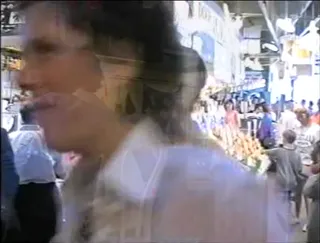
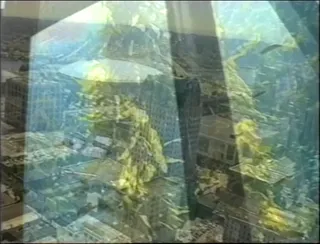
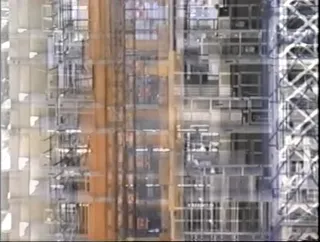
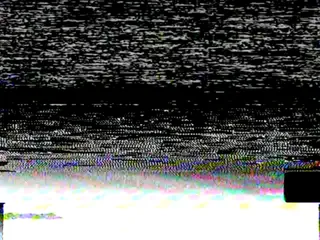
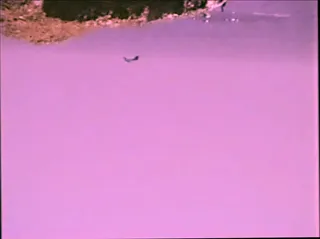
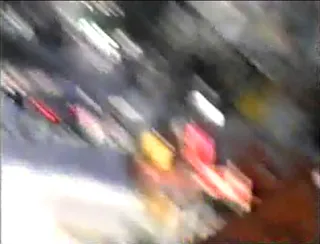
Ihr Weg in die Welt der Kunst begann auf unkonventionelle Weise. Nach ihrem Studium der Übersetzungswissenschaften an der Universität Genf arbeitete sie als DJ und Kulturjournalistin und hielt die sich ständig weiterentwickelnde Landschaft der Musik und digitalen Kultur fest.
Diese Faszination führte sie 2004 nach Berlin, wo sie sich dem Redaktionsteam des De:Bug Magazin anschloss, einer der führenden Stimmen für elektronische Musik und kulturellen Wandel. Ihre Arbeit als Journalistin weitete sich bald auf die Erforschung der umfassenderen sozioökonomischen Veränderungen aus, die das digitale Zeitalter mit sich brachte. Sie veröffentlichte ihre Arbeit unter anderem bei renommierten Publikationen wie Die Zeit, Neue Zürcher Zeitung und Tages-Anzeiger.
2007 wechselte Schwerzmann in die audiovisuelle Branche, vertiefte ihre Studien am SAE Institute for Film and Music Technolgy in London und arbeitete gleichzeitig als Auslandskorrespondentin für deutschsprachige Medien. Im Jahr 2011 verlagerte sie ihren Fokus ganz auf ihre künstlerischen Aktivitäten.
Ihre ersten Werke drehen sich um die zutiefst menschlichen Themen von Leben und Tod und deren komplexe psychologische, kulturelle und existenzielle Wahrnehmung. Gleichzeitig arbeitete Schwerzmann von 2014 bis 2022 beim deutsch-französischen Kultursender ARTE, wo sie den Bereich Dokumentarserien und interaktive Erzählinitiativen leitete. Als Redakteurin und Produzentin betreute sie mehr als 600 Programmstunden.
Heute widmet sie sich ganz ihrer künstlerischen Tätigkeit und konzentriert sich dabei auf die Konvergenz von digitaler Technologie und menschlicher Interaktion. Ihre Arbeit hinterfragt die Grenzen zwischen Realität und digitaler Welt und untersucht, wie Technologie unsere Wahrnehmung prägt.
Kontakt
Son parcours dans le monde de l'art a commencé par un chemin peu conventionnel. Après avoir étudié la traduction et l'interprétation à l'Université de Genève, elle a travaillé comme DJ et journaliste culturelle, capturant le paysage en constante évolution de la musique et de la culture numérique.
Cette fascination l'a conduite à Berlin en 2004, où elle a rejoint la rédaction du magazine De:Bug, l'une des principales voix de la musique électronique et du changement culturel. Son travail de journaliste s'est rapidement étendu à l'exploration des transformations socio-économiques plus larges induites par l'ère numérique, contribuant à des publications de renom telles que Die Zeit, Neue Zürcher Zeitung et Tages-Anzeiger.
Trois ans plus tard Sarah Elena Schwerzmann s'est orientée vers le monde audiovisuel, poursuivant ses études en technologie cinématographique et musicale au SAE Institute de Londres, tout en travaillant comme correspondante étrangère pour des médias germanophones. En 2011 elle s'est entièrement consacrée à ses activités artistiques.
Ses premières œuvres étaient centrées sur des thèmes profondément humains tels que la mort et ses résonances psychologiques, culturelles et existentielles. Parallèlement, de 2014 à 2022, Schwerzmann a travaillé pour ARTE, la chaîne de télévision culturelle franco-allemande, où elle a dirigé des séries documentaires et des initiatives de narration interactive. En tant que chargée de programmes et productrice elle a supervisé plus de 600 heures de programmation, créant des récits captivants.
Aujourd'hui, Schwerzmann se consacre entièrement à sa pratique artistique, en se concentrant sur la convergence entre la technologie numérique et l'interaction humaine. Son travail remet en question les frontières entre la réalité et le monde numérique, explorant la manière dont la technologie façonne notre perception de l'existence, de l'identité et des liens qui nous unissent.
Contact
Her journey into the world of art began from an unconventional path. After studying translation and interpreting at the University of Geneva she worked as a DJ and culture journalist capturing the ever-evolving landscape of music and digital culture.
This fascination led her to Berlin in 2004, where she joined the editorial team of De:Bug Magazin, one of the leading voices on electronic music and cultural change. Her work as a journalist soon expanded into exploring the wider socioeconomic transformations brought on by the digital age, contributing to prominent publications such as Die Zeit, Neue Zürcher Zeitung and Tages-Anzeiger.
Three years later Sarah Elena Schwerzmann transitioned into filmmaking, furthering her studies in film and music technology at SAE Institute in London, while also working as a foreign correspondent for German-language media. In 2011 she shifted her focus entirely to her artistic endeavours.
Her early works centred around the deeply human themes of death and its complex psychological, cultural, and existential resonances. Simultaneously, from 2014 to 2022, Schwerzmann worked at ARTE, the French-German cultural television channel, where she spearheaded documentary series and interactive storytelling initiatives. As commissioning editor and producer she oversaw more than 600 hours of programming, crafting compelling narratives.
Today, Schwerzmann is fully devoted to her artistic practice, focusing on the convergence of digital technology and human interaction. Her work challenges the boundaries between reality and the digital world, exploring how technology shapes our perceptions of existence, identity and connection.
Contact
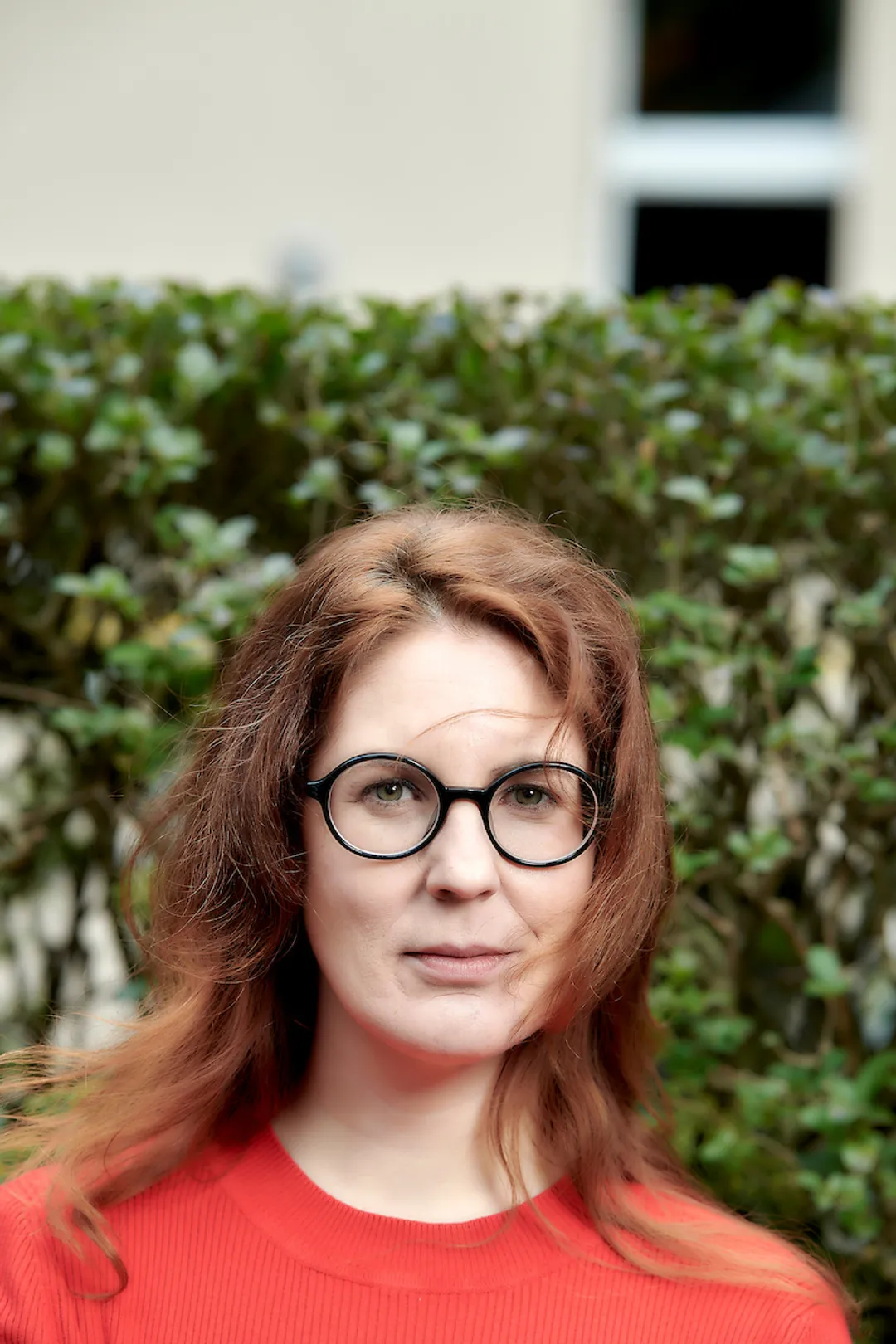
Eine Aufstellung künftiger und bereits vergangener Auftritte gibt es hier.
Une liste des performances futures et passées est disponible ci-dessous.
A list offuture and past performances can be found below.
Sägestrasse 65
Köniz (Schweiz)
Sägestrasse 65
Köniz (Suisse)
Sägestrasse 65
Köniz (Switzerland)
ArtKöniz
Uraufführung
Première
Premier
Heitere Fahne
Wabern, Bern (Schweiz)
Heitere Fahne
Wabern, Berne (Suisse)
Heitere Fahne
Wabern, Bern (Switzerland)
Festival
hello@force-majeure.org
❉ Website by Etter Studio